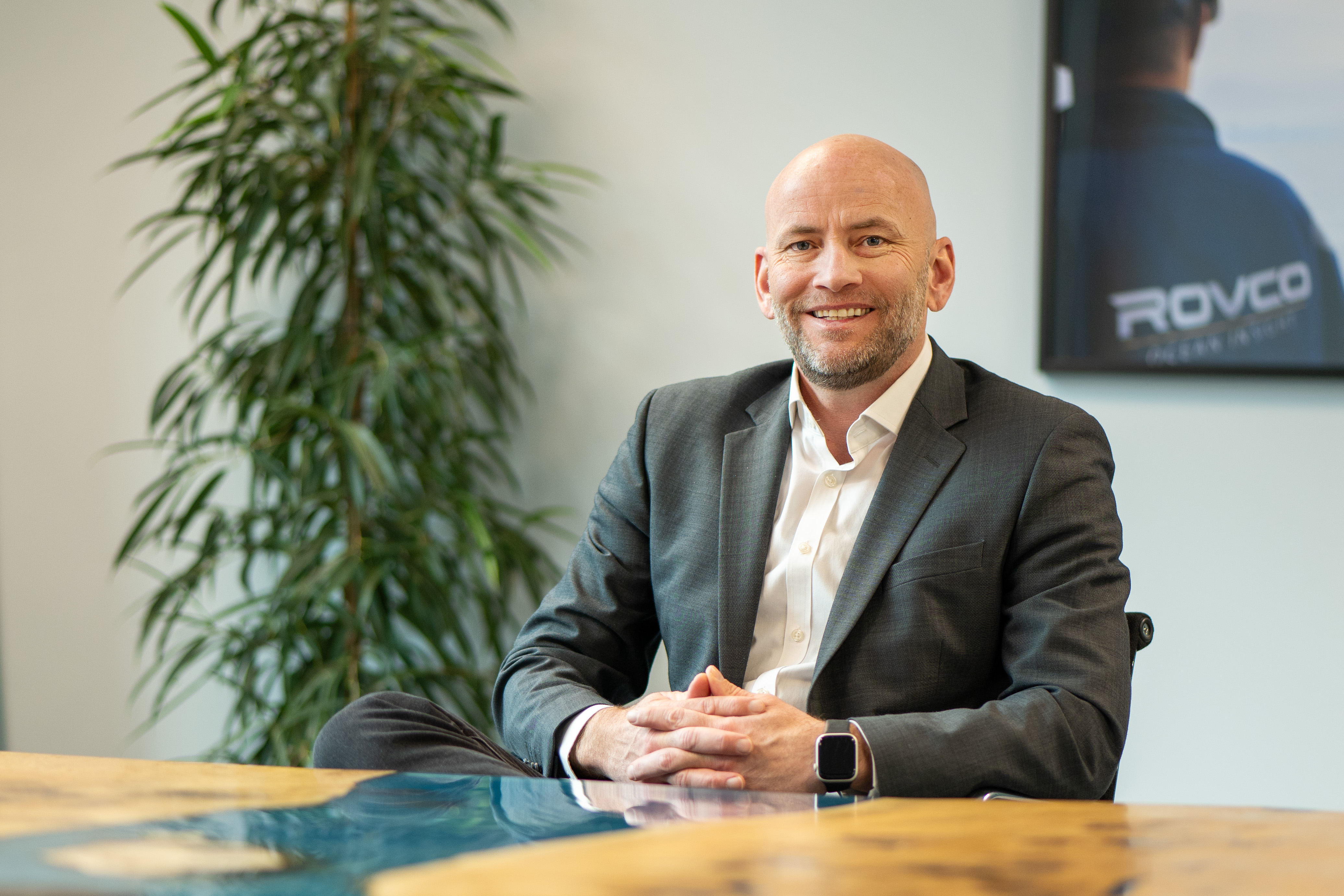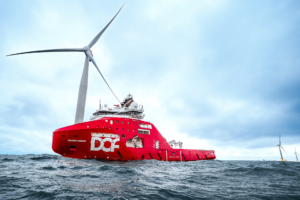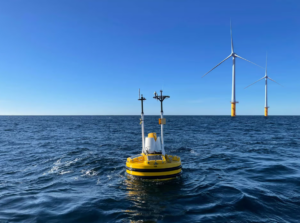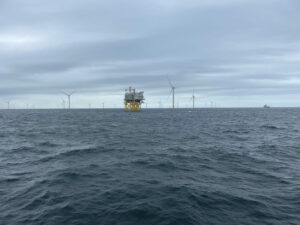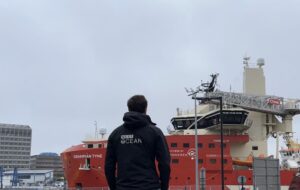Interview with Rovco CEO: New Technologies Can Close Huge Offshore Wind Skills Gap
New technologies have the ability to massively close the huge skills gap and shortage of workers that is looming over the offshore wind industry, allowing 10 to 17 times more work to be done by one person, according to Brian Allen, CEO of Rovco, a UK company focused on automating offshore wind services by creating and deploying novel tech solutions.
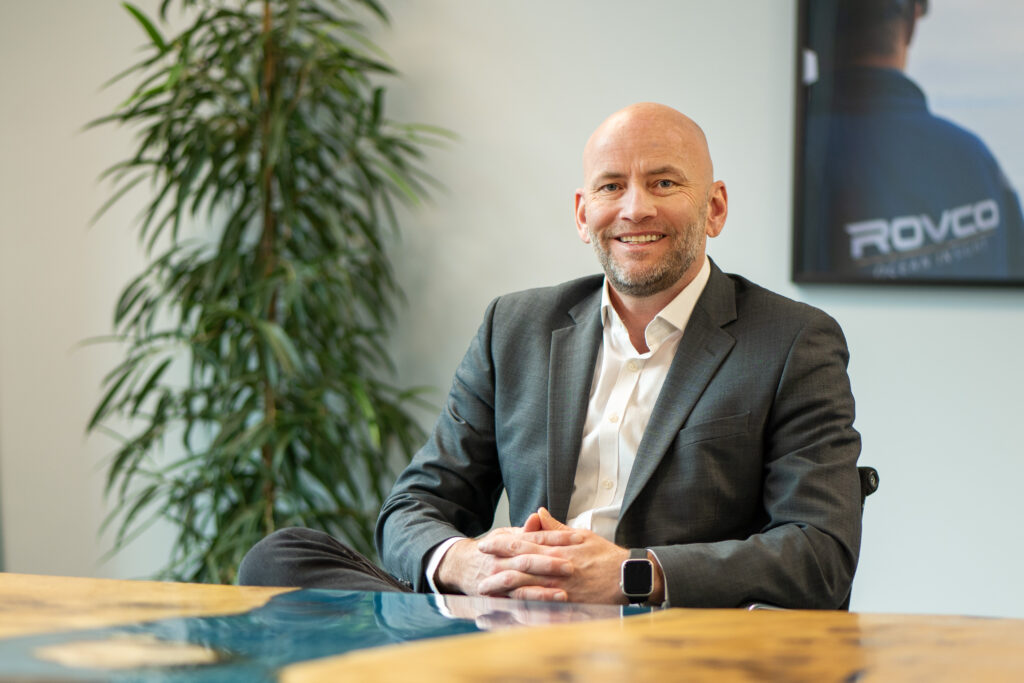
In an interview with Offshore Energy, Allen explains that the pace at which the offshore wind market is growing has caused a real shortage of people, noting that in the UK more than 100,000 workers are needed if the country is to hit the 55 GW by 2030 target.
“What we are seeing is a huge skill shortage. That is not because the jobs are dangerous, all issues around the danger are really well-managed. All of the companies in our sectors have very good ways of managing safety and very good safety cultures. So it is not that it is dangerous, it is just that it is growing rapidly,” Allen said.
“Even in the UK where we have pledged to have 55 GW of offshore wind by 2030, we have literally got six years to grow our industry by four to five times. We only have around 30,000 workers in the offshore wind industry. If we are to hit the 55 GW number, we need over 100,000. There is a gap of 70,000 people just in this country.”
Allen believes that businesses that are going to be successful in offshore wind are those that not just hire the best people but also cultivate and train them. Oil & gas workers are probably the best target area because all the skills – such as those required for offshore surveys, geophysical surveys, site characterization, and also underwater robotics – are almost a like-for-like transfer from oil & gas to offshore wind.
The Rovco CEO notes that this is an “almost” as there are still nuances from offshore wind that need to be handled, the work is carried out in shallower water and the conditions and data collected are slightly different, but the core skills that are needed are almost identical and the engineering or technician side is common – so there is a “yes” for the transition of people from oil & gas to offshore wind.
“If someone can manage a site characterization project in the oil & gas industry, they can pretty much manage the one in the offshore wind industry with a little bit of help the first few times. And if someone can manage an underwater vehicle in the oil & gas industry, they can manage one in offshore wind, except for the conditions that are very slightly more challenging because the water is shallower and more turbid. So it is slightly harder in offshore wind with underwater vehicles, but most of the skills are still the same.”
Technology as the Solution
According to Allen, there is a slight change in the level of interest when a job requires going out to sea and working on a vessel. To get around this, a lot of companies set up training academies to entice people into the industry, visit graduate recruitment fairs trying to bring people across from other industries like car industries or land surveying, however, there are companies, such as Rovco, doing all that but also tackling the problem from the technology point of view by looking into how artificial intelligence (AI) systems can be used to deliver a larger amount of work without additionally burdening the personnel.
“When you start using technology to solve the problem, it starts to close the skills gap slightly because you are able to force multiply. The same number of people can do two or maybe three times more work as a group. In some areas, AI can really, really help and you can get way more force multiplication, so we are one of a few industries where AI does not actually affect or threaten jobs because we are so short of people we actually really need it to essentially force multiply,” Allen said.
Rovco’s chief states that technology has a huge effect in the offshore industry, but it is also quite risk-averse and is relatively slow to transition because there are many large industrial, very expensive capex projects going on whereby there are tried-and-tested methods that are safe ways of doing things. Changing from the old way which is known to be safe to bringing in new technology is a slow transition but as we bring that in, we start to see the efficiencies.
Technologies have the ability to massively close the skills gap, but engineers are still needed to fix and look after things. Pairing with AI systems built to actually learn from workers’ knowledge allows one engineer to perform 10 to 17 times more work and can fix more than one vehicle at a time as they are not required to also drive them.
Allen believes that we are at the cusp of a huge technology shift, with technology changing how we think about work taking place in the offshore industry and it is coming in to change all operations – including inspections, pipe fittings, etc.
“Long-term wise 25 years is a huge amount of technology growth, absolutely huge. I would say in 25 years you will have entirely automated inspection systems, entirely AI-driven wind farms and oil fields, people actually working hybrid from home, curating and caretaking all of this technology and just some technicians in fields to help. We are going to see a transformation of this industry.”
This might happen in 15 and not 25 years as the pace of technology acceleration is huge at the moment, Allen notes. At Rovco, next year we will see the company with autonomous vessels for site characterization surveys, underwater vehicles that completely drive themselves, and fewer people working on each individual vessel. The same number of people will work on more ships or at home, bringing to the transition of roles from offshore vessel-based to onshore, a sort of hybrid work model.
“We are seeing that transition short-term, in the next 12 to 22 months we are rolling out technology that is fully autonomous, AI-driven, not remote, so we are going to see this shift from remotely-driven things and remotely-operated vehicles to autonomous and AI-driven vehicles. Which is quite a big shift. AI is starting to help and then it will accelerate.”
Expansion Plans
Rovco and its sister company Vaarst are currently in the process of recruiting 150 people in the UK, with the majority based in Scotland in Aberdeen, and 50 globally, mostly split between the U.S. and Germany, all planned to come on board in the next six to nine months.
Related Article
-
Rovco and Vaarst to Bring On Board Over 150 Subsea Roles by End of 2025
Jobs & Recruitment
The company is also opening large European headquarters, a similar operational HQ as the current one in Aberdeen, and has plans to relocate its U.S. office from New York to another location, as well as open a small office in Asia, most likely in Tokyo, Japan.
“We have a small office in New York which we are going to relocate and we are hiring a large number of people into it. We are not able to say where that office is going to be. At the moment we are in New York in a small office but we have got a large amount of capital going into actually opening up a large operational HQ for the U.S.,” Allen said.
“Our Asia play is slightly smaller because we need to learn about the Asian market and the culture in Asia, particularly around the energy industry which is completely different from Europe and the USA. In order to start a business and center an office there, we need to respect the fact that the cultures are so different and we need to learn how to operate a business in Asia first. So you will see us make tentative steps into Asia with a small office first.”

